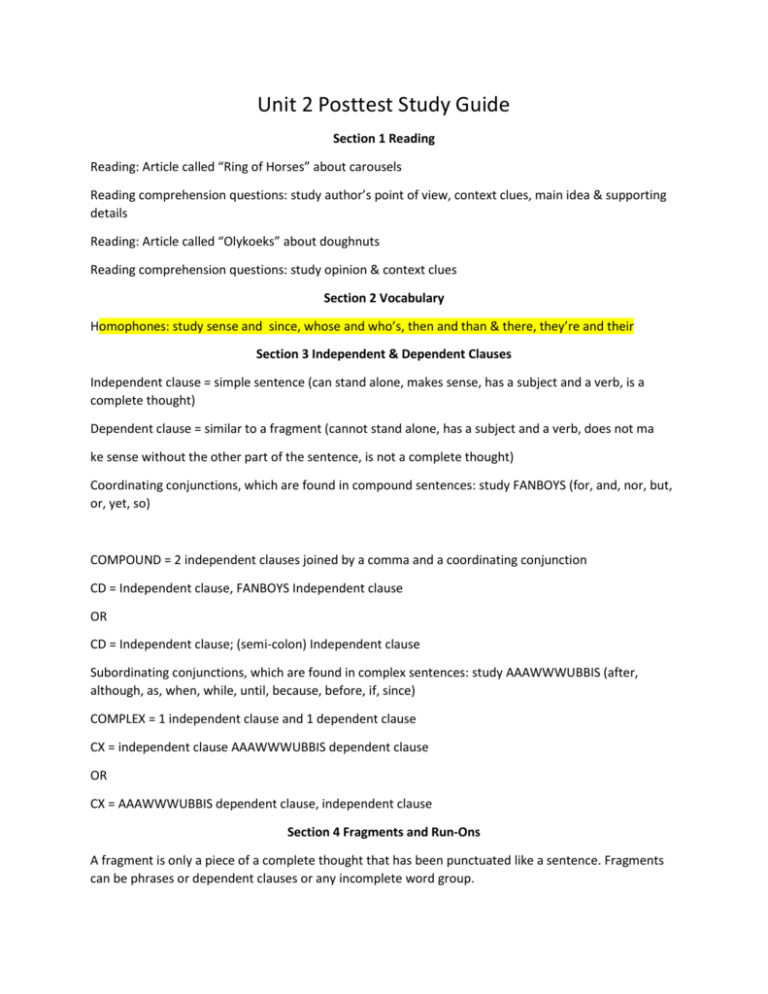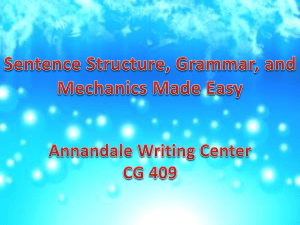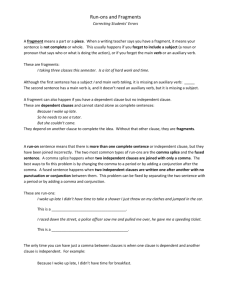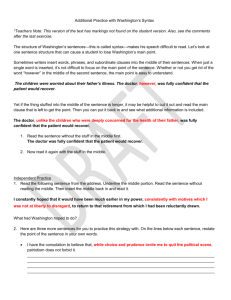ELA Unit 2 Posttest Study Guide
advertisement

Unit 2 Posttest Study Guide Section 1 Reading Reading: Article called “Ring of Horses” about carousels Reading comprehension questions: study author’s point of view, context clues, main idea & supporting details Reading: Article called “Olykoeks” about doughnuts Reading comprehension questions: study opinion & context clues Section 2 Vocabulary Homophones: study sense and since, whose and who’s, then and than & there, they’re and their Section 3 Independent & Dependent Clauses Independent clause = simple sentence (can stand alone, makes sense, has a subject and a verb, is a complete thought) Dependent clause = similar to a fragment (cannot stand alone, has a subject and a verb, does not ma ke sense without the other part of the sentence, is not a complete thought) Coordinating conjunctions, which are found in compound sentences: study FANBOYS (for, and, nor, but, or, yet, so) COMPOUND = 2 independent clauses joined by a comma and a coordinating conjunction CD = Independent clause, FANBOYS Independent clause OR CD = Independent clause; (semi-colon) Independent clause Subordinating conjunctions, which are found in complex sentences: study AAAWWWUBBIS (after, although, as, when, while, until, because, before, if, since) COMPLEX = 1 independent clause and 1 dependent clause CX = independent clause AAAWWWUBBIS dependent clause OR CX = AAAWWWUBBIS dependent clause, independent clause Section 4 Fragments and Run-Ons A fragment is only a piece of a complete thought that has been punctuated like a sentence. Fragments can be phrases or dependent clauses or any incomplete word group. To correct a fragment, connect the fragment to another clause to form a complete sentence. A run-on occurs when two sentences are run together without the proper punctuation and/or connecting words. A run-on may be corrected by putting a period between the sentences. A run-on may be corrected by connecting two related sentences with a comma followed by a coordinating conjunction (FANBOYS) Section 5 Primary and Secondary Sources Primary sources are a first hand, eye witness account (diary, original WWI uniform worn by your grandfather, speech, photographs) Secondary sources are not a first hand, eye witness account (magazine article about the old west, a chapter in your social studies textbook, a newspaper article about the depression) Section 6 Non-restrictive Elements Non-restrictive elements can be referred to as “interrupters.” They can be removed from a sentence and the sentence will still make sense. They are punctuated with either, commas, dashes or parentheses My mother, who drives a red car, was late. Saving endangered animals – tigers, manatees, elephants – is our plan. Julie asked John (who was in his class) if he could catch a ride. Section 7 Action, Helping or Linking verbs Study your “verb triangle” study tool we created in class, look up the helping verb song on youtube and practice it. ACTION VERBS show action (stop, run, play, think, eat) HELPING VERBS help another action or linking verb (must do, should not worry, will come) LINKING VERBS connect the subject to a predicate that describes the subject The students were sad that break was over. The teacher was a young man from England. The pizza is delicious. Section 8 Non-fiction Text Features Study index, headings, font style, table of contents, captions, glossary, charts and graphs Section 9 Pronouns Study the differences between subjective, objective and possessive pronouns, and know how to correctly use them in a sentence. Study your chart on types of pronouns









